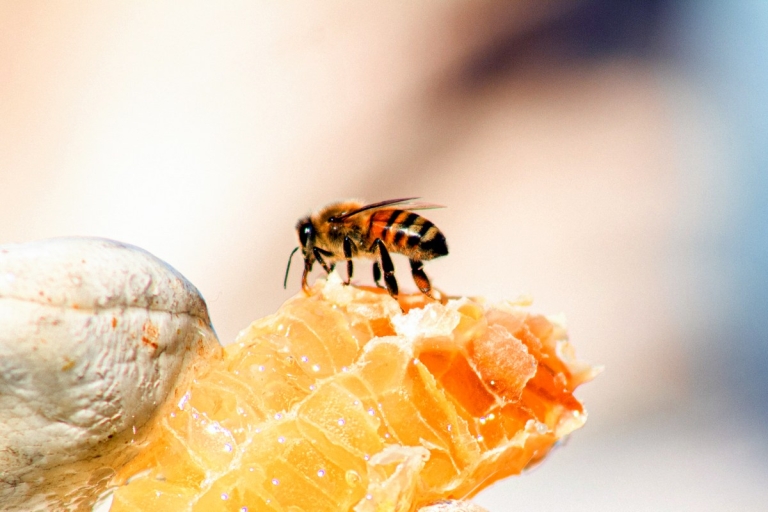
West Virginia is a prominent producer of Appalachian honey, churning out almost 245,000 pounds annually from 13,300 registered bee colonies. It ranks 40th in the nation among producers, though the honey it produces is renowned for its richness.
Most of the state’s honey is produced from black locust, tulip poplar, and basswood blossoms—nectar sources that can allow a colony to produce an average of 80 to 100 pounds each during a good season, according to the W.Va. Department of Agriculture.
Tulip poplar and black locust trees are found in most areas across West Virginia, with basswood located in more mountainous regions. Many other plants contribute to its crop—including goldenrod, sourwood, sweet clover, thistle, blackberry, dandelion, buckwheat, and lavender.
According to state apiarist Shanda King, West Virginia honey has many benefits to health and the local economy. Not only are consumers supporting local beekeepers, but those with seasonal allergen issues and concerns can purchase spring and fall honey for help.
“It’s local, so not only is it better for you, but we also get a lot of people who want to eat local honey for health reasons, like to expose their system to pollens,” says King. “Because plants are regional, that means you are allergic to something that is near you, and that means you need to eat honey from near you.”
“You’re also supporting a local business,” she says. “To me, that’s huge.”
Local honey will vary in color and taste due to a bee’s nectar sources—plants that bloom at different times of the year, though sometimes species overlap when they bloom.
“Your honey is endlessly variable if you’re buying local honeys, which is exciting,” says King, a beekeeper herself for more than ten years. “Local honeys are so much fun because I might get a honey one year, and I never get it again.”
Spring honeys are usually lighter in color, and honeys progressively get darker as the year goes on, but tulip poplar honey, a darker-colored spring honey crop, is an exception. King says not to be afraid to try different varieties.
“The spring honeys are very sweet, and the farther you go towards fall, a lot of complex tastes are coming in,” King says. “So if you’re cooking with honey, those are going to add different flavors.”
The Capitol Market in Charleston and The Wild Ramp in Huntington are among the outlets that sell local honey, and other beekeepers sell their products online. “Once someone finds out you’re a beekeeper, you have no problem at all selling honey. The market is nowhere near saturated,” King says.
King says local consumers should stock up on these local honeys when available.
“Once they’re sold out, you’re not going to get any more until the next year, so you better plan ahead,” she says.
“It’s good for people to understand that because we have trouble with honey adulteration, which means "fake honey." It’s not good for our local economy. That’s why I promote West Virginia beekeepers.”
On average, in the state, honey sells for about $10 a pound, though King says that price may increase because of inflation.
“We haven’t really seen it creep up yet from the food inflation, so the local honey is a little farther bit behind, but the costs—for equipment, sugar, medication—have gone up the last two years,” she says.
Honey bees are used for crop pollination and the production of honey and beeswax, and almost all of the 1,285 registered beekeepers in the state are hobbyist beekeepers, such as Ken Miller, a beekeeper in Culloden, West Virginia.
Miller, who supplies honey for the Fly-In Cafe in Huntington, is secretary and treasurer of the Cabell-Wayne Beekeepers Association. He has three hives at his home and one near the restaurant. Aside from the cafe, he mainly sells his honey to family and friends, and his honey is sourced from black locusts and tulip poplar trees.
“Every year it’s different, but you can taste the flowers,” Miller says. “You can taste a lot of different things.”
“From spring all the way to June, July, there’s all kinds of things blooming,” he says. “It’s really a mixture of wildflowers and things like that.”
Miller typically harvests his honey in the summer, when the plants around him have finished blooming. “It’s usually the hottest time of year too, which is good because it helps your honey flow through."
Sign up to receive a FREE copy of West Virginia Explorer Magazine in your email weekly. Sign me up!




























